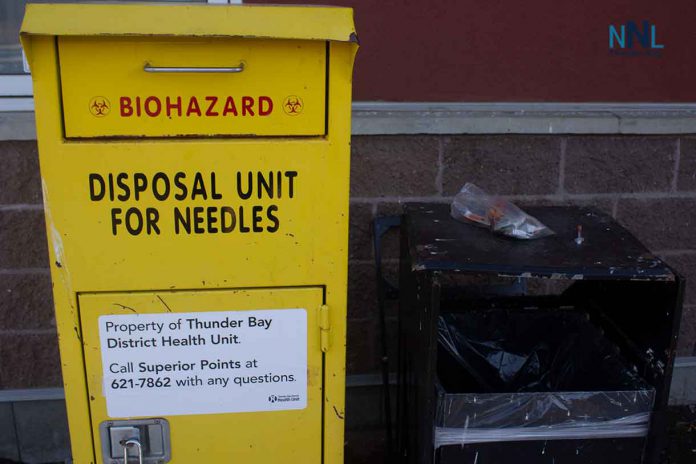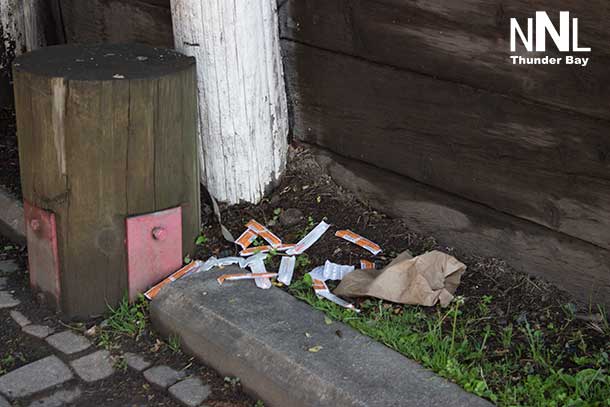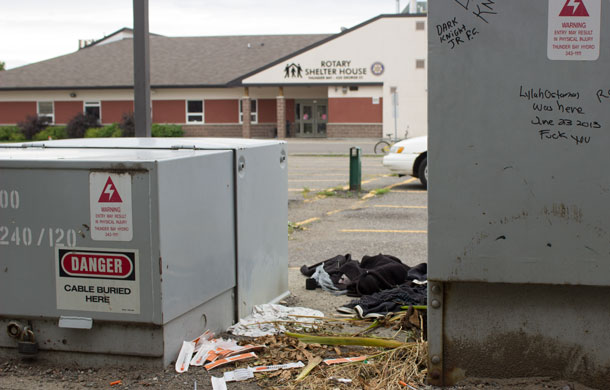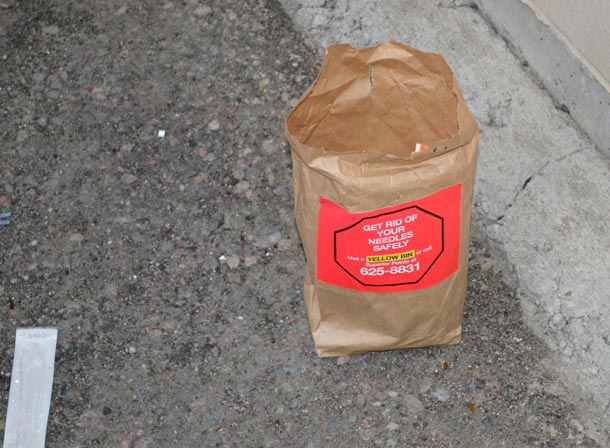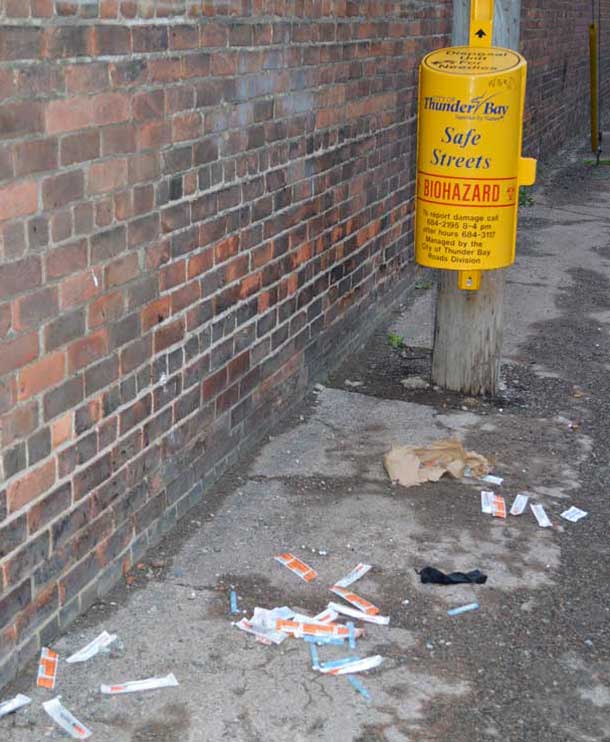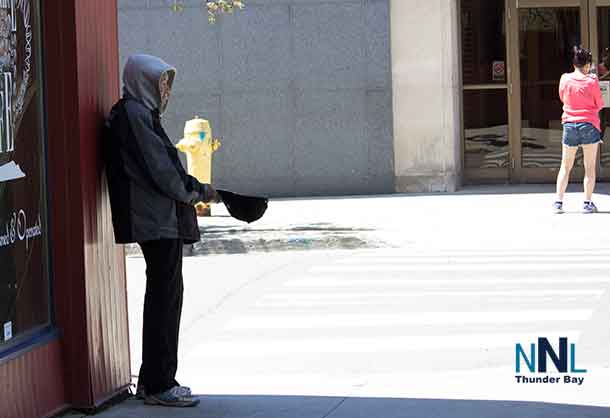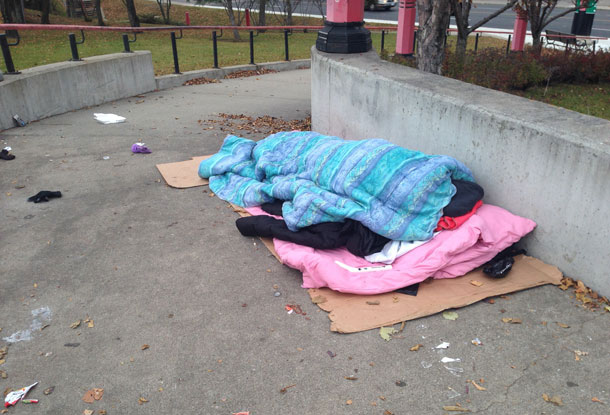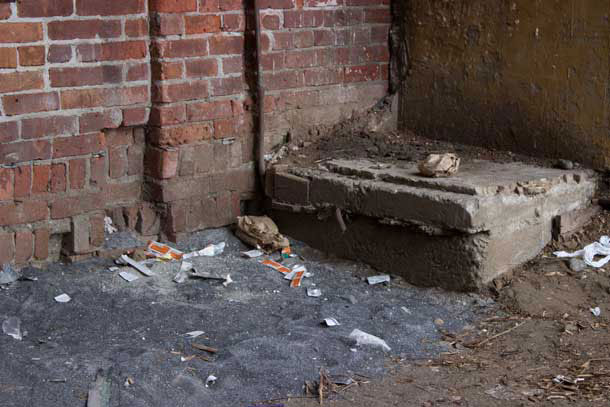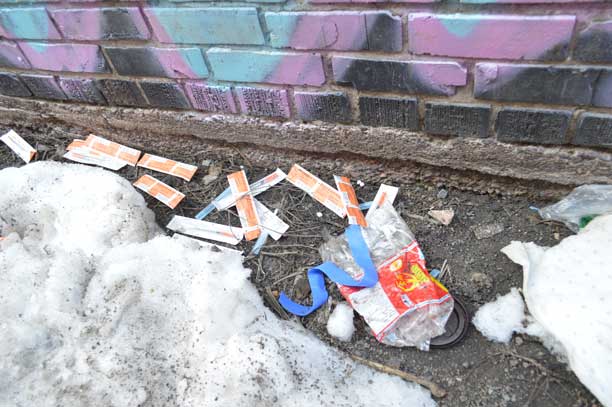THUNDER BAY – OPINION – Take a walk in Thunder Bay and chances are you will see the impact of the addiction issues that are a sad part of our community. Empty alcohol bottles, finesse hairspray, hand sanitizer, broken glass, discarded syringes, and a growing homeless crisis that the Shelter House can hardly keep up with. In the downtown, broken windows and litter including bottles of hairspray and hand-sanitizer. It isn’t a pretty picture.
There are also many areas where homeless gather in hidden places around the city, often to drink, or do drugs. For the homeless living without shelter, the fact that alcohol or drugs are one of the solutions they reach for is not out of the question. To feel numb, feel nothing, is often what those in despair seek to do.
In many cases, Thunder Bay Police Service frontline officers are put in the position of social workers on top of their other duties. One of the top calls for Thunder Bay Police Service is for quality of life calls. Calls often dealing with issues related to alcohol and drugs.
Finding solutions means turning the problem on its head. Think of it, over the past decade, the issues around addiction, have they really changed? Are lives better today?
The problem of addiction, either to drugs or alcohol are often at the heart of the growing child welfare issue. Families led along the path of addiction are likely to see that cycle continue.
These are all the signs of the rampant issues of addiction in Thunder Bay.
To be clear, Thunder Bay is not alone in this increasingly serious crisis. Many other cities are facing similar addiction crisis situations.
For Thunder Bay, the addiction crisis has seen a major change in the level of violence on our streets.
Southern Ontario gangs have pounced on our city seeing in the addiction rates a market for their illegal drugs. Our city is seeing the increased violence as a result of this influx of violent gangs as turf wars and battles over market share continue. These gangs are more than willing to kill to send a message of their perceived growing power in our city.
In this crisis, perhaps there is an opportunity for Thunder Bay.
Thunder Bay could set a goal to become the Addiction Treatment Capital of Canada and invest in treatment facilities to help cure this ongoing epidemic of addiction.
At all five political levels, Indigenous leadership, civic leadership, provincial leadership, federal leadership, and most importantly grassroots leadership setting a goal of making our city as addiction free as possible should become a major goal.
It is an achievable goal – one that would save lives, restore families, bring back prosperity and raise the level of hope in our community and region. Chances are in an addiction-free Thunder Bay we would also see reduced racism, and reduced crime too.
Achieving this goal will save money on healthcare, policing, and in the courts too.
It will also improve the conditions for downtown revitalization in our north and south core downtowns.
It isn’t going to be easy. For some leadership, it is going to mean admitting there is a problem and that the solutions being tried are not working.
That is a bitter pill perhaps for politicians but is not a bitter pill for community leaders.
Taking new directions will make a real difference in our city.
We need to massively ramp up the de-tox facilities in our city as well as the treatment facilities.
We need to also re-focus our focus on youth. Only a few years ago, the City of Thunder Bay was very focused on youth centres. In past City Councils, there was a child and youth advocate. That position is now unfilled, what message does that send?
There are areas where money could easily be re-allocated. And likely over a five-year period, savings in policing and other areas would fund the program.
If Thunder Bay were to set a goal of being the Addiction Treatment Capital of Canada, there could also be revenue made available from other less enlightened regions of Canada.
The pluses far outweigh the minuses. Imagine a Thunder Bay where addiction was not a problem. We would have a safer city, and people’s quality of life would go up.
Thunder Bay has the perfect mix for making moves in this direction. There is the Northern Ontario Medical School here, training new doctors, we have great programs here for counsellers to learn and then apply their skills.
There is an opportunity here for Thunder Bay to make a difference in our city, in our region, and across Canada.
The questions for our community leaders is a simple one? If not? Why not?
James Murray


